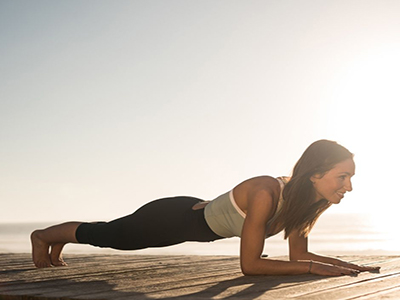
Sue Noyes, Associate Director, Recreation & Wellbeing – Fitness Operations
Spencer Hawkins, Aquatics Director
As fitness pros we’re often asked about activities that compliment each other and swimming and Pilates are at the top the list. In a nutshell, swimming provides the cardiovascular benefits while Pilates contributes core strength and general body awareness that can make you a better swimmer.
What is Pilates?
Pilates is named for its creator, Joseph Pilates, who developed the exercise philosophy in the 1920s. As fans know, Pilates is an accessible way to build strength in your core muscles for better posture, balance, and flexibility. Pilates routines encompass low-impact flexibility, muscular strength, and endurance movements with a focus on proper postural alignment, core activation and stability. Here are some of the ways that Pilates can improve your swimming:
Focus on Core: A strong core is essential for swimming. Core exercises train the muscles in your torso – pelvis, lower back, hips, and abdomen – to work in harmony. In swimming, every movement you make originates from the core and core strength and stabilization are at the heart of every Pilates exercise.
Activate the Stabilizers: Pilates teaches dynamic stability of the torso through progressive exercises that activate your inner muscular support system. As swimmers we move our arms and legs to propel ourselves through the water and the torso must serve as the stable platform from which those limbs produce force. A stable core will enable you to leverage your larger muscles to move through water more quickly and efficiently.
Connect with your Breath: Coordinating movement with inhaling and exhaling is a huge component of Pilates. Pilates teaches swimmers to incorporate relaxed, efficient, and effective diaphragmatic breathing patterns into exercise to activate core stabilizers, minimize energy expenditure, and maximize the available oxygen to working muscles.
Reduce Resistance: A common instructor cue during a Pilates session is to lengthen and
extend your body through the movements. An essential part of swimming is maintaining a streamline position to reduce resistance in the water and improve efficiency. By working on strengthening and lengthening the spine, it becomes easier and more natural to hold a streamline position while swimming.
Improve your Reach: Pilates strengthens and stretches muscles and joints through their full range of motion. Swimmers require optimum joint range of motion and flexibility to achieve the positions required to swim with ease. Pilates exercises can improve range of motion in the hips and shoulders which are especially important for swimmers.
In summary, improving your swimming essentially comes down to two main themes; increasing propulsion and decreasing resistance. Pilates helps in both of these areas by developing all the skill sets listed above. Remember that in order to decrease resistance it is important to keep the head in a neutral body position (eyes down but 10% degrees forward), and a nice long stable spine line with the swimmer slightly leaning forward on the sternum to keep the hips high in the water. The rhythm and timing of your strokes should begin to make you feel like you are gliding through the water. As you become comfortable with this you then can start to increase the tempo and power of your arms and legs. However, it is important that the core remain stable and move in a synchronized rhythm with the limbs.
Jump in With Berkeley Recreation & Wellbeing
Incorporating Pilates exercises as a part your swimming workout program can improve your performance overall and even reap benefits beyond the pool. Berkeley Recreation & Wellbeing currently offers recreational lap swimming for students and essential workers at two campus pools. For virtual Pilates, check out Recreation & Wellbeing online programming for live-streamed or on-demand classes.
